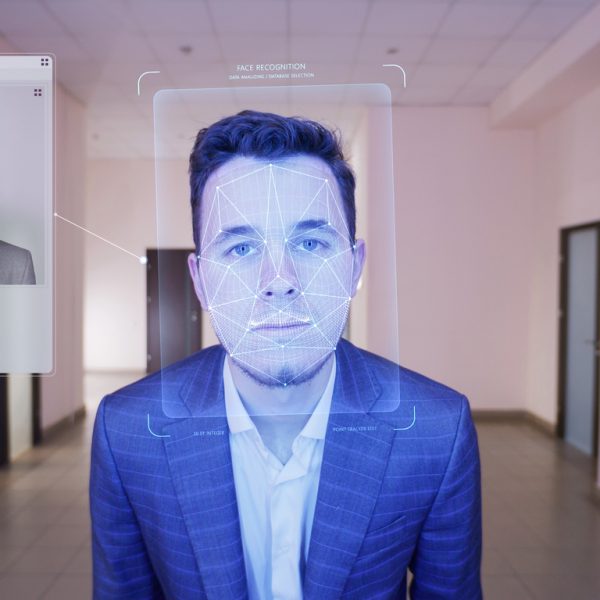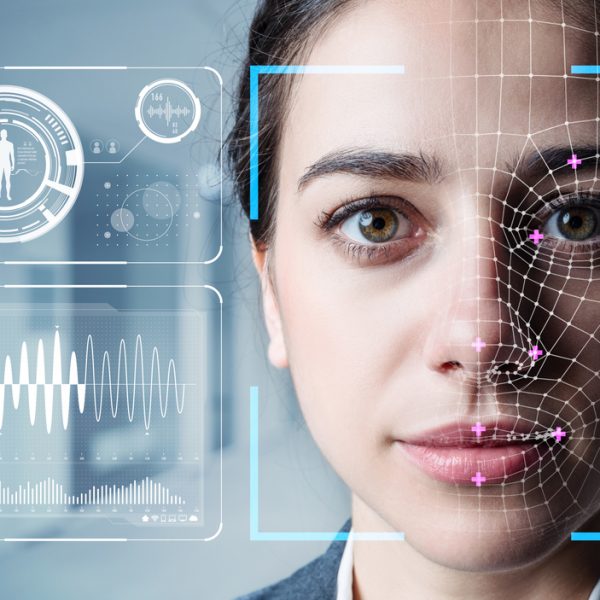Facial recognition technology has become an important part of today’s business industry, gaining traction across various sectors. This powerful tool is now embedded in our daily lives. From unlocking smartphones to airport security, the benefits of facial recognition are undeniable. The advantages of facial recognition include improved security, faster authentication, and simplified access control.
However, the technology also presents challenges and raises important ethical and privacy concerns.The facial recognition ethical issues currently being debated include surveillance, data protection, and algorithmic bias. As usage expands, questions about the ethics of facial recognition become more critical.
This blog explores the benefits of facial recognition, examines the pros and cons of facial recognition,, and discusses how to balance its impact responsibly.
So, what are the benefits of facial recognition, and how can businesses navigate the risks? Here’s a closer look at the key issues surrounding facial recognition pros and cons today.
How Facial Recognition Technology Works?
Facial recognition technology uses biometric data to identify or verify individuals based on unique facial features. It analyzes patterns such as the distance between the eyes, nose shape, and jawline to create a digital faceprint for comparison against stored data.
What is Facial Recognition?
Facial recognition is a biometric technology system that identifies or verifies a person by analyzing facial features. This technology captures and compares unique patterns and characteristics, such as the distance between eyes, nose shape, and jawline.
So, what is facial recognition used for? Beyond simple identification, the benefits of facial recognition technology include faster security screening, touchless authentication, and seamless integration into business systems, mobile devices, and public safety infrastructure.
As facial recognition continues to develop, understanding how facial recognition works is essential to fully understand both its capabilities and its implications in real-world applications.
Development and Advancements
Facial recognition technology has evolved rapidly, thanks to advancements in artificial intelligence (AI) and machine learning (ML). Initially used in limited security applications, it now boasts widespread use due to improved accuracy and efficiency.
Modern systems use deep learning algorithms to analyze facial data with high precision, contributing to the growing benefits of facial recognition technology in areas like access control, surveillance, and user authentication. While these developments offer significant benefits of facial recognition, they also bring new challenges — highlighting the ongoing need to evaluate the pros and cons of facial recognition as the technology continues to expand.
Applications of Facial Recognition
Facial recognition technology is applied in various fields, including business, security, education, and consumer products, offering both convenience and control.
Workplace and Academic Applications
In workplaces, facial recognition benefits include enhanced security and streamlined attendance tracking. Employers can monitor access to sensitive areas and ensure accurate timekeeping, reducing the risk of time fraud. Educational institutions use this technology to automate student attendance, ensuring a more efficient administrative process.
These practical uses demonstrate some of the clear pros of facial recognition, especially when it comes to saving time and enhancing control. However, organizations must also consider the facial recognition ethical issues, such as privacy and data protection.
Security Applications
Security is one of the primary areas where facial recognition shines. Law enforcement agencies utilize it for identifying suspects and locating missing persons. Airports and border control facilities employ facial recognition systems to verify identities quickly and accurately, enhancing overall security and reducing wait times.
While these are powerful benefits of facial recognition technology, they also raise concerns related to surveillance and civil liberties — key points in the ongoing debate over the pros and cons of facial recognition.
Consumer Applications
Consumers encounter facial recognition in various everyday scenarios. Smartphones and laptops use it for secure access, while retail stores implement it for personalized shopping experiences. Social media platforms also utilize facial recognition to tag individuals in photos, simplifying the process of photo management and sharing.
Still, while consumers enjoy the pros of facial recognition, these uses also raise questions about consent and data use — reinforcing the importance of addressing the cons of facial recognition and ongoing facial recognition ethical issues in everyday applications.
Advantages of Facial Recognition
Facial recognition technology continues to grow in popularity due to its wide-ranging benefits across industries and daily life. From improved accuracy to enhanced convenience, the advantages of facial recognition are driving adoption in both the public and private sectors. Understanding the pros of facial recognition can help organizations and consumers alike make informed decisions about how and where to use it.
Efficiency and Accuracy
One of the key benefits of facial recognition is its efficiency and accuracy. The technology can quickly identify individuals, reducing the time required for manual checks. This speed is particularly valuable in high-traffic environments such as airports, stadiums, and office buildings, where facial recognition technology can help prevent delays, improve flow, and enhance security. These performance improvements represent some of the most critical pros of facial recognition in modern systems.
Convenience in Daily Life
Facial recognition brings significant convenience to daily life. Unlocking devices, authorizing payments, and accessing secure locations become effortless with the help of facial recognition terminals. This convenience is one of the major benefits of facial recognition technology, making it appealing for both businesses and consumers seeking speed, security, and simplicity. Whether at home or in the workplace, the advantages of facial recognition continue to shape how we interact with digital systems.
Concerns and Challenges
While the benefits of facial recognition are widely promoted, it’s equally important to understand the potential downsides. The cons of facial recognition often revolve around privacy, misuse, and ethical concerns that must be addressed as adoption increases. Exploring the pros and cons of facial recognition helps businesses and policymakers make informed decisions about when and how to implement the technology responsibly.
Privacy and Data Collection
Despite the numerous advantages of facial recognition time clocks and systems, privacy concerns remain a significant issue. The collection and storage of biometric data raise questions about who has access to this information and how it is used. Without proper safeguards, there’s a risk of data breaches and unauthorized use, making privacy one of the most debated facial recognition ethical issues today.
Risk of Misuse
The risk of misuse is another critical disadvantage of facial recognition systems. There are concerns about surveillance and the potential for abuse by authorities or malicious actors. Unauthorized tracking, profiling, or monitoring of people without consent represents one of the key cons of facial recognition and has led to increased scrutiny and pushback in both public and private sectors.
Technical and Demographic Challenges
Facial recognition technology faces technical challenges, particularly concerning accuracy across different demographic groups. Studies have shown that the technology can exhibit biases, leading to higher error rates for certain ethnicities and genders. These discrepancies can result in false positives or negatives, raising fairness concerns and contributing to the broader conversation around facial recognition ethical issues.
Regulatory and Ethical Considerations
The use of facial recognition technology raises significant regulatory and ethical considerations. Governments and organizations must establish clear guidelines and regulations to ensure the technology is used responsibly. Ethical considerations involve balancing security and convenience with the right to privacy and individual freedoms.The pros and cons of facial recognition must be weighed carefully to balance innovation with the protection of privacy and civil liberties. Ongoing discussions around the ethics of facial recognition continue to shape how and where the technology should be used.
Balancing the Facial Recognition Pros and Cons
Facial recognition technology has become a powerful tool, but its adoption must be balanced with careful consideration of its risks. Evaluating the pros and cons of facial recognition allows businesses, governments, and society to implement it in a way that supports progress while protecting individual rights. This section explores how ethical use and regulation can help address key facial recognition ethical issues and maximize the benefits of facial recognition technology.
Ethical Use of Technology
To ensure responsible deployment, the ethical use of facial recognition must be a top priority. Organizations must prioritize transparency and obtain explicit consent from individuals before collecting and using their biometric data. Establishing strong data protection protocols is essential to reduce the cons of facial recognition and prevent misuse. Addressing facial recognition ethical issues through proactive policies can help maintain trust while leveraging the pros of facial recognition.
Role of Regulation
Regulations play an important role in ensuring the responsible use of facial recognition technology. Governments should establish comprehensive legal frameworks that address privacy, data protection, and ethical concerns. Regular audits and assessments can ensure compliance and prevent misuse. Well-designed policies help mitigate the cons of facial recognition and provide guidance for safe, responsible implementation.
Looking Ahead
The future of facial recognition technology hinges on finding a balance between innovation and regulation. As AI and machine learning continue to evolve, accuracy and fairness will likely improve, strengthening the benefits of facial recognition technology. Collaboration between technology developers, policymakers, and civil society is essential to address the challenges and ensure the benefits of facial recognition are realized ethically and responsibly.
Facial recognition technology offers numerous benefits, from enhanced security to improved convenience in daily life. However, it also presents significant challenges, particularly concerning privacy and ethical use. By understanding the pros and cons of facial recognition technology, we can develop strategies to balance these aspects effectively. Responsible implementation and robust regulation will be key to ensuring that the advantages of the face recognition system outweigh its disadvantages, paving the way for a secure and convenient future.







